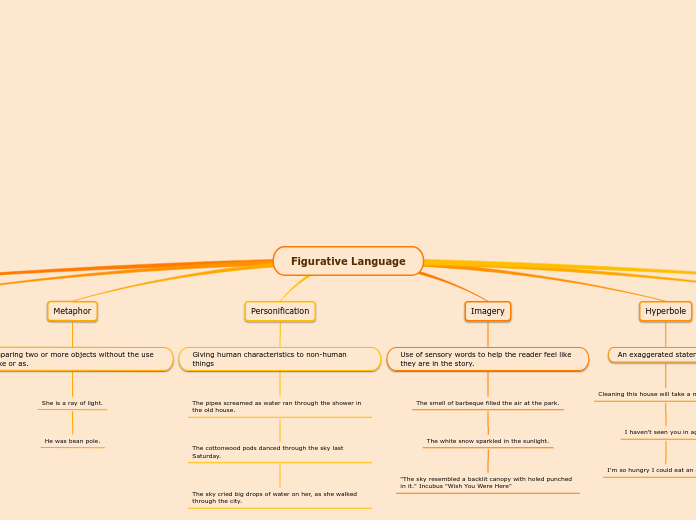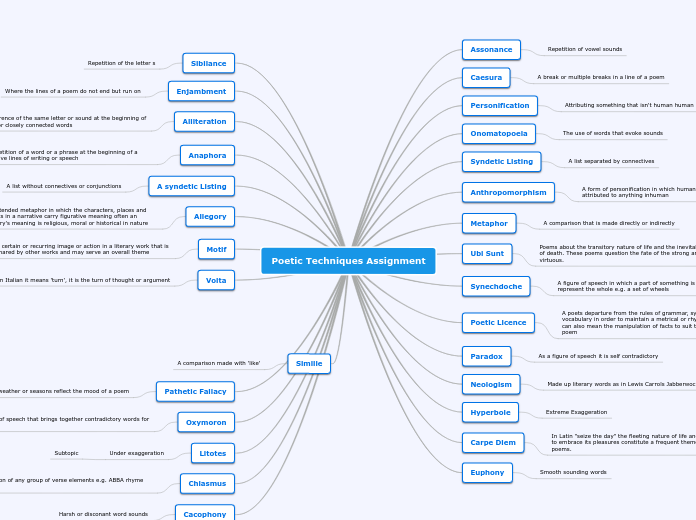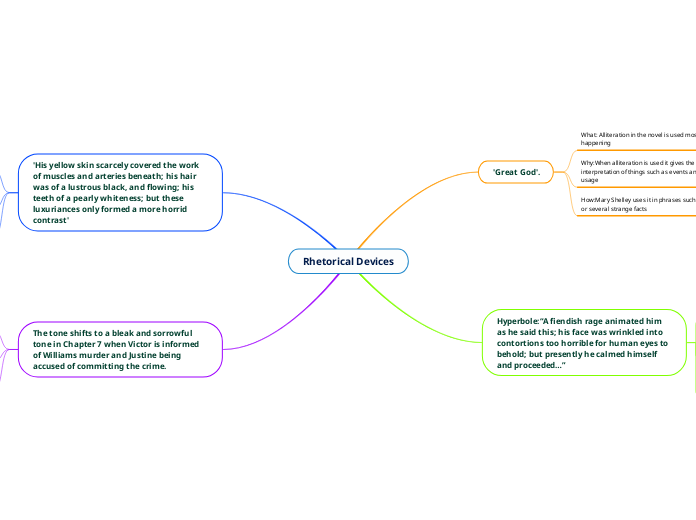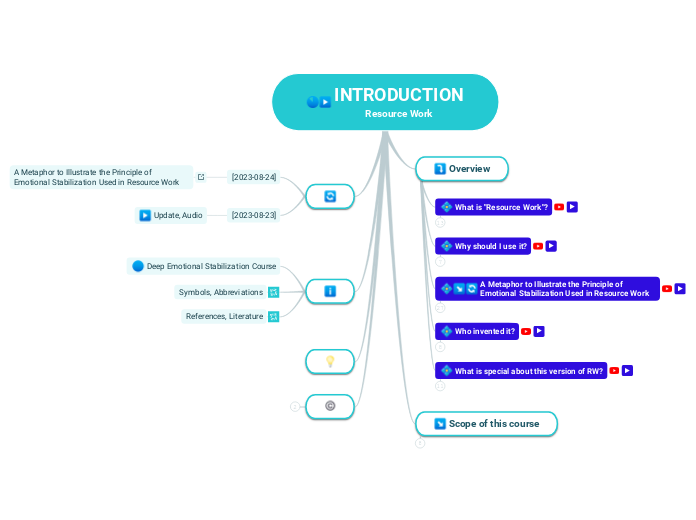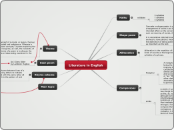Figurative Language
Onomatopoeia
A word that is used to make a sound
Kaboom!
Splat!
Crunch!
Alliteration
Use of the same sound in several words in a sentence.
Sally Sells Seashells By the Seashore
Peter Piper picked a peck of pickled peppers.
Henry has a heavy head.
Hyperbole
An exaggerated statement.
Cleaning this house will take a million years!
I haven't seen you in ages!
I'm so hungry I could eat an elephant!
Imagery
Use of sensory words to help the reader feel like they are in the story.
The smell of barbeque filled the air at the park.
The white snow sparkled in the sunlight.
"The sky resembled a backlit canopy with holed punched in it." Incubus "Wish You Were Here"
Personification
Giving human characteristics to non-human things
The pipes screamed as water ran through the shower in the old house.
The cottonwood pods danced through the sky last Saturday.
The sky cried big drops of water on her, as she walked through the city.
Metaphor
Comparing two or more objects without the use of like or as.
She is a ray of light.
He was bean pole.
Simile
Comparative language, using like or as.
My sister is as strong as an ox.
My son is sly like a fox.
Aubrey's hair was as white as the snow.
Idiom
A phrase that means something different than what it says.
It's raining cats and dogs.
The maze was a piece of cake.
I told Brody to break a leg before he went on stage.
